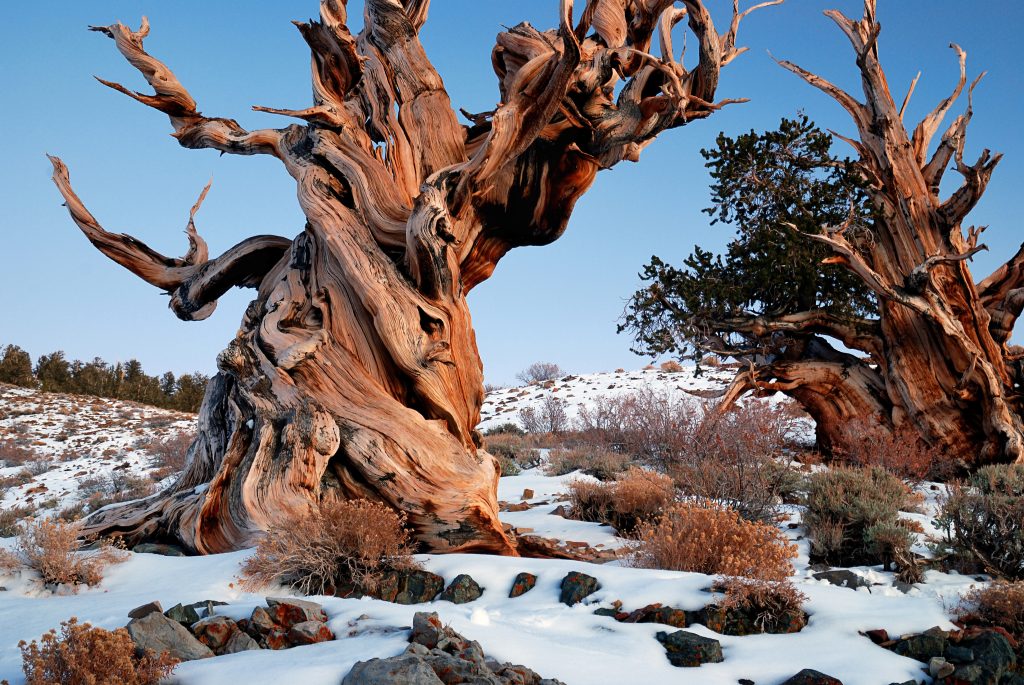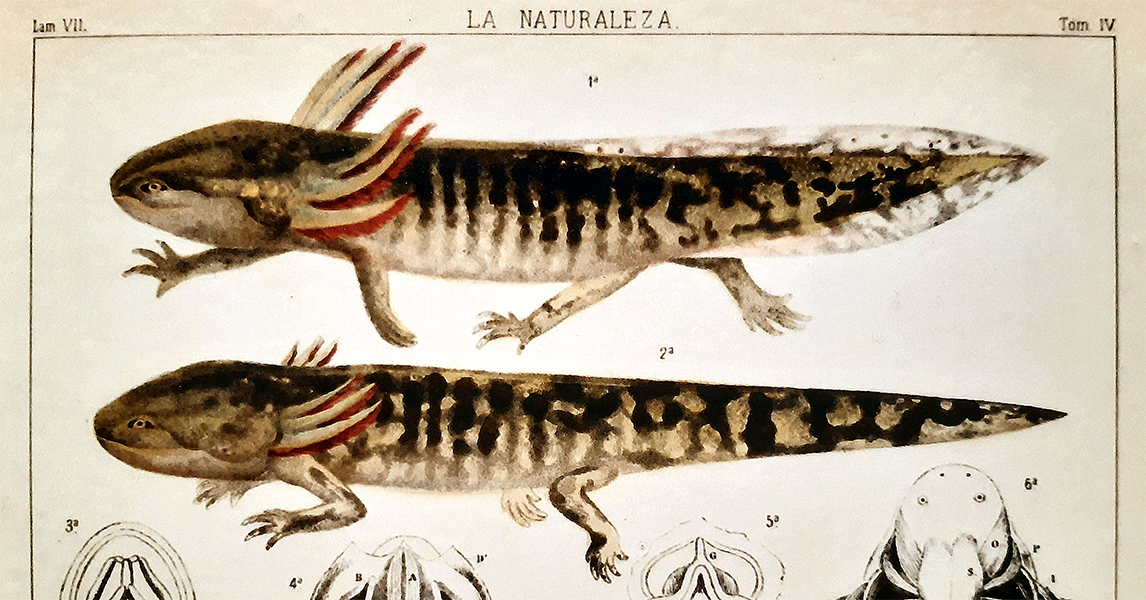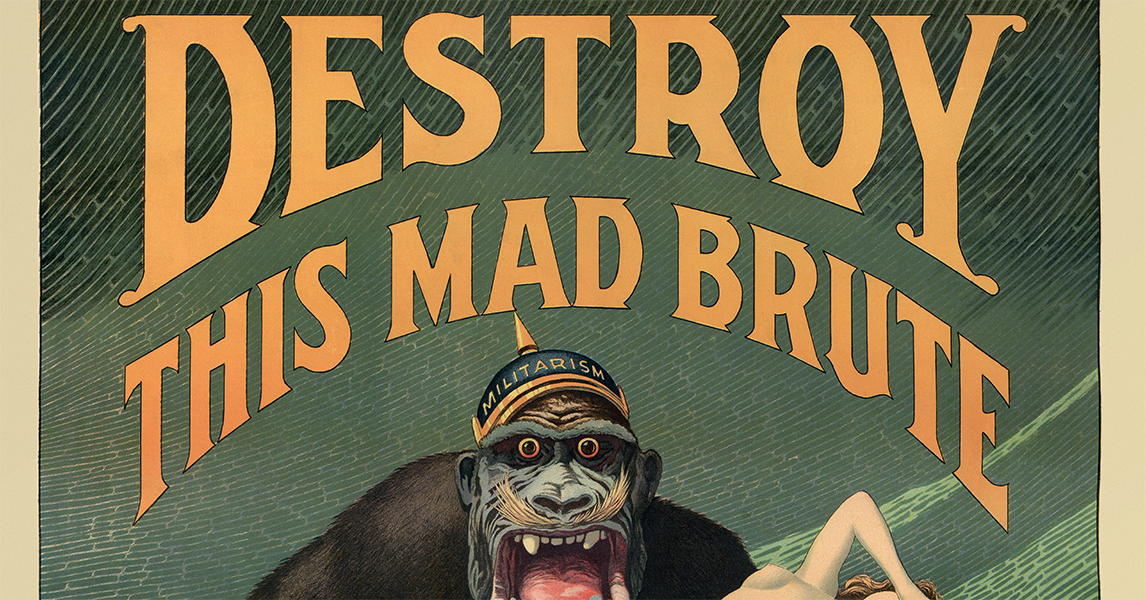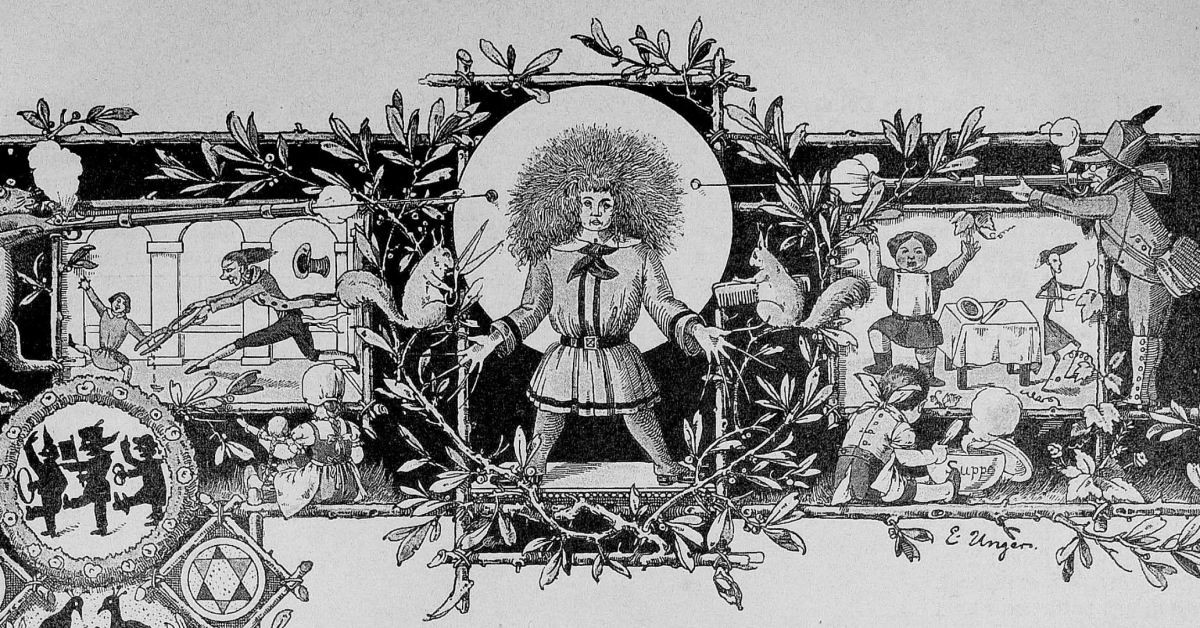No one can stay young forever. Age, that sagging dragon, comes for all of us eventually. Humans, on average, live for about 72 years. Women tend to live a couple of years longer, men a couple of years shorter, both thanks to biological factors like X chromosome hoarding and social factors such as the gap between men’ s proclivity for sharp weapons and their ability to properly wield sharp weapons.
Where you live also has some effect: Nigerian men live, on average, to 54. Swiss women, on average, enjoy three more montane decades and can expect to make it closer to 85.
These are, of course, only averages, and the ardent agemaxxers of the world have done much to point out the futility of taking them for granted. The oldest human on record was Jeanne Calment of France, who died in 1997 at 122 years of age (allegedly–claims that she was secretly her own daughter have not held up to scrutiny), being born just ten years after the American Civil War and living through both World Wars, the rise and fall of the Soviet Union, and the Japanese release of Pokemon Red and Green versions.
The oldest man, Jiroemon Kimura, made it to 116, having served in the Japanese Army during World War I and lived long enough to see the international release of Pokemon Black 2 and White 2, to this day the only numerically-named sequels in mainline franchise history, a fact which would unfortunately be lost on Kimura.
Human lifespan is correlated with a variety of qualities and statistics including diet, stress, and sleep, though genetics also play a critical role. Those seeking to maximize their own longevity often delve deep into the lifestyles of people who live in so-called blue zones, places associated with trends of longer life among their residents.
Scientists and hobbyists (biohackers trying to make their “6 hours a day in an ice bath, 6 hours a day shitposting on Twitter” lifestyles last forever) alike have spent an unimaginable number of hours attempting to learn just what makes residents of Okinawa, Japan; Sardinia, Italy; the Nicoya Peninsula of Costa Rica; Icaria, Greece; and Loma Linda, California live so long. As with much of the modern practice of life extension, however, it seems their time might have been better spent doing anything else.
That’s because in 2024, Saul Justin Newman, a researcher at Oxford University focused on the science of aging, published research critiquing the meaningful existence of these so-called “blue zones” and putting forth the idea that their apparent statuses as outliers of human longevity were really the result of poor record keeping. In some cases, folks who claimed to be incredibly old may have been doing so without documentation, while in others, people who’d died years ago remained legally alive just long enough for their next of kin to continue cashing their pension checks.
Humans, for now, seem to max out at 122. And that’s a distant pipe dream for most of us, with no one hitting that goal since 1997. In the ensuing twenty-eight years and nine Pokemon generations, the nearest contender was Japan’s Kane Tanaka, who made it to 119.
Among humans, supercentenarians like Jeanne Calment, Jiroemon Kimura, and Kane Tanaka represent the top percent of the top percent of the top percent in the field of “number of years lived”. But among Earthlings? They’re not even close.
Who’s Oldest?: Earth Edition
For real longevity, we have to look beyond our chromosome-sharing neighbors and expand our search to life at large. Among animals, the creature best renowned for its refusal to die has got to be the tortoise. The eldest of these terrestrial turtles may have lived as long as 255 years before its death in 2006, though this extreme age is, like many such cases in those so-called blue zones, disputed.
A somewhat more reasonable guess is that the eldest tortoise known to have ever lived is still alive; Jonathan, a Seychelles giant tortoise has been roaming Saint Helena, the island of Napoleon’s demise, for some 192 years. In other words, when the former consul of France died in exile in 1821, Jonathan would have been… not born yet. But if he’d been born just twelve years earlier, a baby turtle could have met a French former conqueror just in time to watch him die of gastrointestinal collapse.
Another icon of animal longevity is the lobster, a sea arthropod renowned for its apparent immortality; lobsters do not age in entirely the same way humans do. As people grow old, our telomeres, the bits at the ends of our chromosomes, shorten. The process, once begun, is generally irreversible. Telomeres can be lengthened through the interference of a protein known as telomerase, but most human cells stop producing telomerase in adulthood.
Lobsters, meanwhile, continue to produce this protein, leading to the allegation that, because their chromosomes do not “age” in the same way that human cells do, they are theoretically immortal. “Theoretically” is doing a lot of heavy lifting here. Given that the world is not overwhelmed with lobsters and that Red Lobster, the sick man of the casual dining industry, is not either dominating the stock market or bankrupted by the insane overabundance of its namesake product, you might (correctly) imagine that lobsters are not actually immortal. While some lobsters can theoretically continue to grow larger and larger infinitely, their method of growth is dependent on the continuous moulting of their shells, a process that becomes more physiologically straining and requires more resources as they continue to put themselves through it. Despite all of the hype, the eldest ever lobster was estimated to have lived only to 140 years old. The rest strain themselves to death.
The lobster’s lifespan is, nonetheless, impressive, but maybe time moves differently underwater, where clams can live for hundreds of years and corals and sponges for thousands. It’s here that the vertebrate with the longest estimated lifespan, the Greenland Shark, thrives. “Thrives” may be the wrong word choice for a species considered vulnerable to endangerment, or one whose pace of life is arguably more drawn out than its lifespan.
These battle-scarred deep-dwellers reach sexual maturity at around 150 years of age and give birth after gestational terms lasting somewhere between eight and eighteen years (they won’t swim still long enough for us to find out).
In the time it takes a human to go from loving his mother to loving Roblox to loving drugs, the Greenland Shark brings to completion just one pregnancy but makes up for the lost time by expelling as many as two to three hundred pups (the adorable baby name for these row-toothed cartilaginous monsters) at once.
The oldest known Greenland Shark had its age estimated at between 272 and 512 years, teaching us that biologists use the same age-guesstimation margin of error as the special guest stars on To Catch a Predator. Nevertheless, even the lower limit of that range has this one outliving the supposedly-immortal lobster record holder by more than a century.
Some worms, the free-roaming penises of the animal world, can live for hundreds, maybe even thousands of years. The geoduck, a North American saltwater clam that looks even more like a penis, will almost certainly outlive yours (or the next one you see, provided that it’s not Napoleon’s) with an age cap somewhere north of 160 years.
Animals, though, have nothing on plants.
Many species of tree can live for hundreds of years with no problem, with some reaching easily into the thousands. The oldest known non-clonal tree is Methuselah, a Great Basin bristlecone pine growing in eastern California some sixteen miles from the Nevada border. The tree, a gnarled mess of sparsely-needled wood that seems to scream “kill me” takes its name from Methuselah, a biblical patriarch who was claimed to have lived for 969 years. He’s easily outshined by this forsaken tree, whose most conservative critics estimate to be at least 4,668 years old. Other estimates put it close to two hundred years older.

I hedge with the identification that Methuselah is the tallest “non-clonal” tree because trees are weird. Many trees produce genetically identical offspring (clones) that, if they take root nearby, can produce root systems that grow and intermingle with their parent and sibling trees, producing a colony of genetically indistinguishable and physically combined plants.
Individual trees in these clonal colonies may die, but their descendants live on, inheriting shared command of the colony. These colonies, not limited to the lifespans of their individual members, can live for as many as tens of thousands of years. But here, age takes a backseat to size. The largest and best known clonal colony, a collection of interconnected quaking aspens known as Pando (from the Latin for “I spread”), occupies an area of 108 acres with 47,000 stems in south-central Utah.


Moving beyond both trees and plants to a separate kingdom of life, the largest identified clonal fungal colony is the organism known as, honest to god, the “Humongous Fungus”. Found in eastern Oregon, this clonal collection of the Armillaria ostoyae fungus is spread over more than two thousand acres and is estimated to weigh thousands, if not tens of thousands, of tons.
You’d be forgiven for wondering why you’ve never seen such a thing. Pando is cool to those who know (now you), but to laymen it looks like (and is) a forest. A mycelial mass twenty times larger? It’s a mycological mess straight out of The Last of Us. Surely you’d have seen a picture or two. And you might’ve, if it was visible. So far, and for the foreseeable future lest we learn how to turn Armillaria ostoyae fruiting bodies into black gold petroleum, the vast majority of the Humongous Fungus exists beneath the Oregonians who might go searching for it. Growing, spreading, conquering, underground.
Much like animals, though, those species on and beneath the land may have nothing on those dwelling in the deep. One 2012 study refers to clonal seagrass colonies in the Mediterranean that expands greedily across 15 kilometers of sea floor off the coast of Spain.
These clonal colonies are insulated from the genetic death threat faced by those life forms reliant on sexual reproduction, but still the individual trees, fungi, and sea grass are mortal beings who live and die behind the mask of replacement steadily manufactured by their colonies, much as we live and die against a background of nations, cities, and families that keep churning on, their lifespans often far greater than those of their constituents.
Baby men
Of those I’ve examined, every species shares this common proclivity for age. But as Hollywood and prospective Trump Administration officeholders know, the real secret isn’t getting old, it’s staying young.
Not everyone races to adulthood. Animals domesticated by humans, from pigs to dogs, tend to retain features of youth throughout their lives such as reduced aggression, smaller stature, floppy ears, and curly tails. Many, if not most of these traits, develop by accident, even as we continue our addiction to playing god while he’s away listening to the prayers of gamblers and professional sports fans.
Humans, too, tend to be more youthful throughout life than our primate cousins. We lack thick coats of body hair, we have bigger eyes and smaller teeth. We have rounder skulls to better suit the sexual scientific appetites of race scientists everywhere.
Some of us drink milk.
Depending on where you grew up and who you grew up around, being able to down a glass of dairy without subsequent intestinal devastation may be the norm and hardly a point of pride. But lactose intolerance in humans is perhaps best viewed not as a disorder but instead as the natural state of life for, not only most people, but the great majority of adult animals.
It’s lactose tolerance that’s bizarre, having evolved only in a few populations of dairy-raising humans, most prevalently in Europe.
Everyone’s heard it proclaimed that early man was a freak for putting his lips to the teats of his animal neighbors and discovering the joy of a beverage meant for the litany of calves too weak and unorganized to put a stop to the thieving great ape, but it’s arguably weirder that he was able to do so without spending the subsequent evening on the pre-neolithic equivalent of the toilet voiding all he’d hunted, gathered, and sucked.
Of course, all mammals can digest milk at some point — that’s the point of its production, be it in standard teat or breast-rendered form or, in the case of the platypus, the odd not-duck of the mammal world, through its sweat.
What makes the lactose tolerators among us different is that we retain that ability well past our dependence on our mothers for sustenance and well into those later years we choose to spend depending instead on metaphorical teats filled with corn syrup and progesterone. That’s because our bodies continue to produce lactase, the enzyme responsible for breaking down lactose. Most animals (and, again, humans) throw the lactase out with the bath water.
Humans, versus other animals, tend to stay young longer. Baby cows, giraffes, and sheep are up and walking moments after they exit the womb (or, on farms, are pulled out by a man who gave up hunting and gathering to forage elbow deep in their mothers).
Baby wolves hunt big game before they’re one year old. Humans, meanwhile, don’t even think about walking until they approach their first birthday and struggle to eat solid food around the time their lupine agemates are helping commit their first murder.
We’re looking embarrassingly weak right now. But remember that we’re the only species to both build and destroy empires. We construct the tallest buildings, send the most of our kin to space, conduct the most life-saving surgeries, and download by far the most internet porn.
Each of these equally-important accomplishments is possible because the biology of humans places a unique emphasis on social development over physical development. Long before our first steps, we understand eye contact. Years before we even think about killing prey we’re taking in hundreds to thousands of words a day and building our own strategies for generating them.
Where other species learn predominantly through experience, we learn by communication. We don’t need to watch our neighbors die to learn that a particular fruit is poisonous or an individual animal has a capacity for face-tearing. We can warn each other verbally before we’re ever in any real danger, keeping our faces intact. And skills that other animals either have to discover independently or glean by witnessing, like tool use, can be explained in abstract terms to kin and neighbors who have never seen even the constituent materials.
Our specialized neoteny helps with this, maybe in expanding our capacity for youthful learning but definitely with that reduction in facial hair. Naked faces marred only with expressive eyebrows allow us to more easily read the thoughts and emotions of family and community members than most in the animal kingdom. It’s not our maturity that built empires, but our neoteny. We never quite outgrow the sandbox.
Other animals have different strategies to hold onto their youth. Take the golden jewel beetle, an ostentatiously glamorous (but still a bug and thus disgusting) insect that burrows into and lives in trees along the Pacific coast of North America from British Columbia to Mexico.
Under normal conditions, the golden jewel beetle spends the early larval stage of its life burrowing and munching for just a couple of years before emerging and pupating into its adult form.
But in some cases, such as when the wood of its host tree is particularly dry, the larva’s development is arrested somewhat, leading to a lengthening of the larval stage that can last years.
This is the sort of variability produced by the natural world, but humans have never been a species to step down to a challenge. Where the gods see trees, clonal or not, we see end tables, bed frames, and dusty wall placards reading “FAMILY”.
In the wild, trees and their wood succumb regularly to the way of the woods, dying and being consumed by animals and fungus (humongous or otherwise). But we humans are ever at work building families, cities, and empires to outlast us, and we’d like for our pocket doors to do the same.
So we treat the wood in such a way as to make it unpalatable to those same predators who munch unabated out in the wild. So when the golden jewel beetle stumbles upon a wall or a dresser rather than a living, breathing, talking Douglas-fir, the nutrients that trigger its metamorphosis from gross wormy bug to disgusting thick winged bug are in significantly shorter supply.
Thus, where the golden jewel beetles of the natural world may find themselves held back in pre-metamorphosis class for a year or two, their inadvertently-domesticated kin living in staircases may find themselves repeating high school chemistry for as many as four or five decades like the unabashed and irresistible pedophiles of the Twilight universe.
But even after the 47 years spent skulking in the staircase by the longest-estimated individual, the larvae have to grow old, to become adults and shoulder the burdens of reproductive urges and complex tax law. That’s the tough part of metamorphosis: sooner or later you have to metamorphose.
But what if you didn’t?
Salamanders and the fountain of youth
Salamanders, like beetles, are a metamorphic species. Generally, salamanders hatch from eggs laid underwater and enter the world as aquatic tadpoles before undergoing a metamorphosis that turns them into adults who can survive both in and out of water.
Some salamanders are different. Some, like the lungless salamanders, skip the larval stage entirely and instead begin their lives simply as smaller adults. But we’re not interested in a species that speedruns adulthood. We’re looking for eternal youth at all costs, and for that we have to better acquaint ourselves with the axolotl.
Axolotls are a family of fully-aquatic salamanders living in central Mexico. Originally occupying a relatively broad region of interconnected wetlands, the Spanish conquest of Mexico and subsequent draining of many of these wetlands to build Mexico City left their populations fractured and scattered. Today, the axolotl inhabits just two or three lakes in the Mexican highlands as a critically endangered species.

Draining the wetlands had disastrous effects on the axolotl in particular because, unlike other salamanders, it never leaves the water. And it never leaves the water because it never gets old.
Most salamanders enter metamorphosis when their thyroid glands produce a hormone that signals the body to begin the process of growing up and leaving their kiddie pools for dry land. Axolotls aren’t the only salamanders that experience thyroid neglect – some other species delay or disrupt metamorphosis when environmental conditions aren’t right. What makes axolotls unique is that, regardless of those conditions, they never produce the hormone to kickstart metamorphosis at all, even when the destruction of their natural habitat may make walking beneficial.
But if axolotls don’t metamorphose, if they stay in their larval tadpole form forever, how can we know that their refusal to grow up is attributable to their inability to produce that specific hormone?
We know axolotls would metamorphose if they could produce the hormone, because we can produce it (synthetically, not through our sweat milk), and when we do so and introduce it to them, they change in the same way their salamander cousins do, and adapt quickly to a life on land unknown to their more direct ancestors.
In other words, axolotls don’t undergo metamorphosis naturally. For all the time we’ve known them, they never have. But they can.

The human tailbone, the coccyx, is a (mostly) useless component of the lower spine that exists as a vestigial remnant of the tail our ancestors once had and cousins still brag about. We don’t have tails and we have to content ourselves with that. Restoring our ancestors’ birthright would take years and untold billions of dollars in medical research that would threaten to divert resources from other causes like curing diseases, even if it would be reasonable and ultimately worth it.
So imagine instead all we had to do was inject ourselves with a little bit of monkey hormone and our tails immediately grew out like we’d never foolishly abandoned them.
This is a mostly perfect analogy for what axolotls experience when we force monster puberty upon them in the name of science, but it’s lacking in that a tail might only aid us slightly in restoring the balance we lost when we jettisoned ourselves from the forest canopy in favor of running into and over each other on crosswalks.
For axolotls, metamorphosis means an entirely separate phase of life they’ve never known, more comparable to our theoretical tails somehow letting us breathe underwater or helicopter through the sky.
Axolotls never get there. Not naturally. Instead, they live in their larval stage from youth to death, sentenced to splash around in their increasingly-strangled Mexican Highlands habitats, escape just out of their reach.
Youth is truly wasted on the young.
Read more
- Assessing the reproductive biology of the Greenland shark (Somniosus microcephalus) by Nielsen, et al. in PLoS One
- Axolotls: Meet the amphibians that never grow up by Hayley Dunning for the British National History Museum
- Biochemistry, Telomere, and Telomerase by Jenna Lee and Mark V. Pellegrini in StatPearls
- Comment on the ecophysiology of the Greenland shark, Somniosus microcephalus by Kooijman, S. A. L. M., in Polar Biology
- Experimentally induced metamorphosis in highly regenerative axolotl (ambystoma mexicanum) under constant diet restructures microbiota by Demircan, et al. in Scientific Reports
- Implications of Extreme Life Span in Clonal Organisms: Millenary Clones in Meadows of the Threatened Seagrass Posidonia oceanica by Arnaud-Haond et al. in PLoS One
- Jonathan, Seychelles giant tortoise by Barbara A. Schreiber for Encyclopedia Britannica
- Supercentenarian and remarkable age records exhibit patterns indicative of clerical errors and pension fraud by Saul Justin Newman, Ph.D
Images
- Gnarly Bristlecone Pine.jpg by Rick Goldwaser
- Licensed under Creative Commons Attribution 2.0 Generic
- Aerial View of the Pando Tree.jpg by Wikimedia user Lance Oditt, Friends of Pando
- Licensed under Creative Commons Attribution-ShareAlike 4.0 International
- Ambystoma mexicanum by Ruben Undheim
- Licensed under Creative Commons Attribution-Share Alike 2.0 Generic
- Ambystomas by Regina Kolyanovska
- Licensed under Creative Commons Attribution-Share Alike 3.0 Unported




